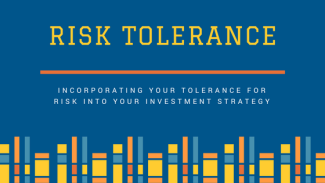
What your risk tolerance means for your investment strategy, Part 1
By Gary Silverman, CFP®
A few weeks ago, we wrapped up a few articles about the basics of risk. Today I’d like to begin looking at how to incorporate your tolerance for risk into your investment strategy.
Most books on investment planning dive right into what sort of return on investment you need to satisfy your goals. That’s not how I do things. Instead you first should determine what amount of risk you can stand. For a given level of risk there is a given estimated return you can make, both average and worst-case.
After you determine the risk (which we will do in a later column), and after you determine the resultant return (which comes from the risk you can take), then you will go back and see if that return will give you enough money to satisfy your investing goal given your ability to fund the investment. If it won’t, you’ll need to change something (more on that coming up).
The reason I do the risk analysis first is that if you determine the return you need first, you are likely to talk yourself into a portfolio that will supply that return and ignore the inherent risk that comes with it. That can lead you to make some unwise decisions (which is my politically correct way of saying it can make you do really stupid things). The risk you can stand doesn’t change based on how much return you need, it changes based on your brain; and most of us are stuck with the one we’ve got. It’s a lot easier to change your goal than it is to change your brain.
It is not unusual for someone’s risk tolerance and return needs not to match. What should you do when this happens?
Having an expected return greater than your needs and still within the risk level you can accept is a very nice problem to have. In this case you can either spend the extra money, lower the risk you take, or get to your goal quicker. The choice is yours. Enough said there.
However if given your risk tolerance the matching return isn’t enough for your goals, you have three choices:
- Invest more money toward your goal
- Delay the goal so that the money has more time to grow
- Change your goal so you don’t need as much money to fund it
Notice that I did not say you should take more risk.
In case I didn’t make myself clear, I will reiterate:
DO NOT TAKE ON MORE RISK.
Taking on more risk than you can tolerate is not a valid choice. Trust me; eventually, it will bite you on the rear end.
This is all well and good, but how can you figure out the amount of risk you can stand? More on that next week.
This article was published in the Wichita Falls Times Record News on March 19, 2017.
Gary Silverman, CFP® is the founder of Personal Money Planning, LLC, a Wichita Falls retirement planning and investment management firm and author of Real World Investing.

